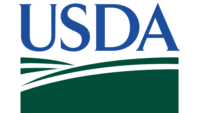Following two Congressional hearings on the beef and cattle markets largely focused on prices producers receive for their cattle, the North American Meat Institute (Meat Institute) said the latest USDA annual report on livestock income clears up misconceptions about the state of cattle markets and shows cash receipts for the sale of cattle and calves increased 16 percent, from $63.1 billion in 2020 to $72.9 billion in 2021.
“As our members said in their testimony, prices are improving for cattle producers due to supply and demand reflecting the cyclical nature of cattle production,” said Meat Institute President and CEO Julie Anna Potts. “Due to the shrinking herd and sustained consumer demand, cattle prices are at seven-year-highs without federal intervention in the market.”
Cattle prices today are the highest they have been since the record highs in 2014 and 2015, when the overall cattle herd was at its smallest since 1952 (for context, that was during the Truman Administration). Those record prices incentivized rapid herd expansion among producers which led in part to the oversupply of cattle in 2020.
The report, compiled by the U.S. Department of Agriculture’s National Agricultural Statistics Service, is the Meat Animals Production, Disposition, and Income 2021 Summary. It says, “Cash receipts from marketings of cattle and calves increased 16 percent, from $63.1 billion in 2020 to $72.9 billion in 2021. All cattle and calf marketings totaled 61.4 billion pounds in 2021, up 4 percent from 2020.”
The report also breaks down cattle revenue by state. Many states’ producers saw increases higher than the nationwide aggregate of 16 percent. For example: Nebraska’s producers’ earnings grew 18 percent, Montana 22 percent, Kansas 18 percent, Kentucky 21 percent, North Dakota 28 percent, and South Dakota 26 percent.
“More and more data are showing that while the industry had to overcome significant challenges in 2020, markets behaved predictably,” said Potts. “As our members told Congress, the markets will continue to improve for producers.”
Source: North American Meat Institute




Report Abusive Comment